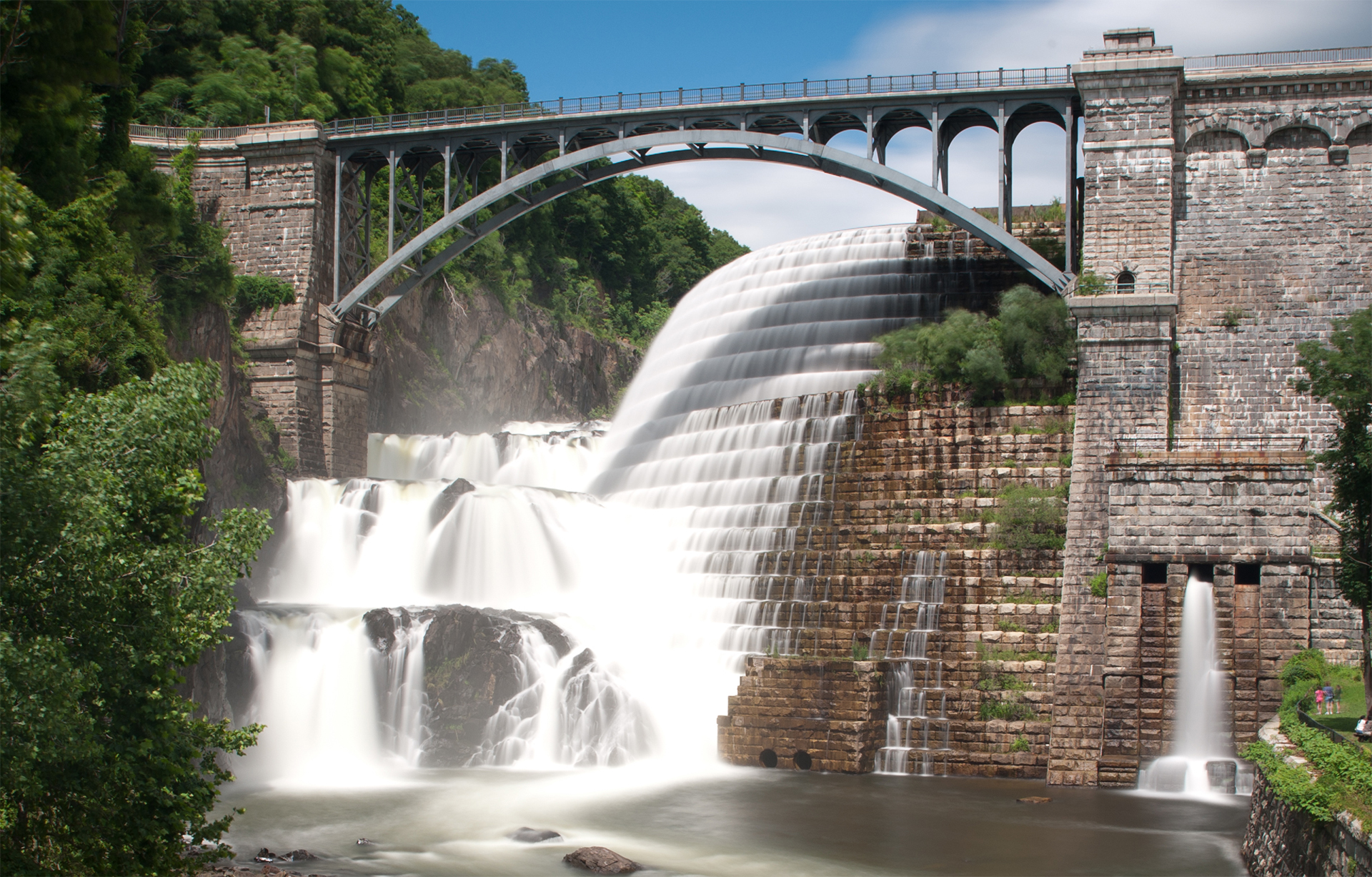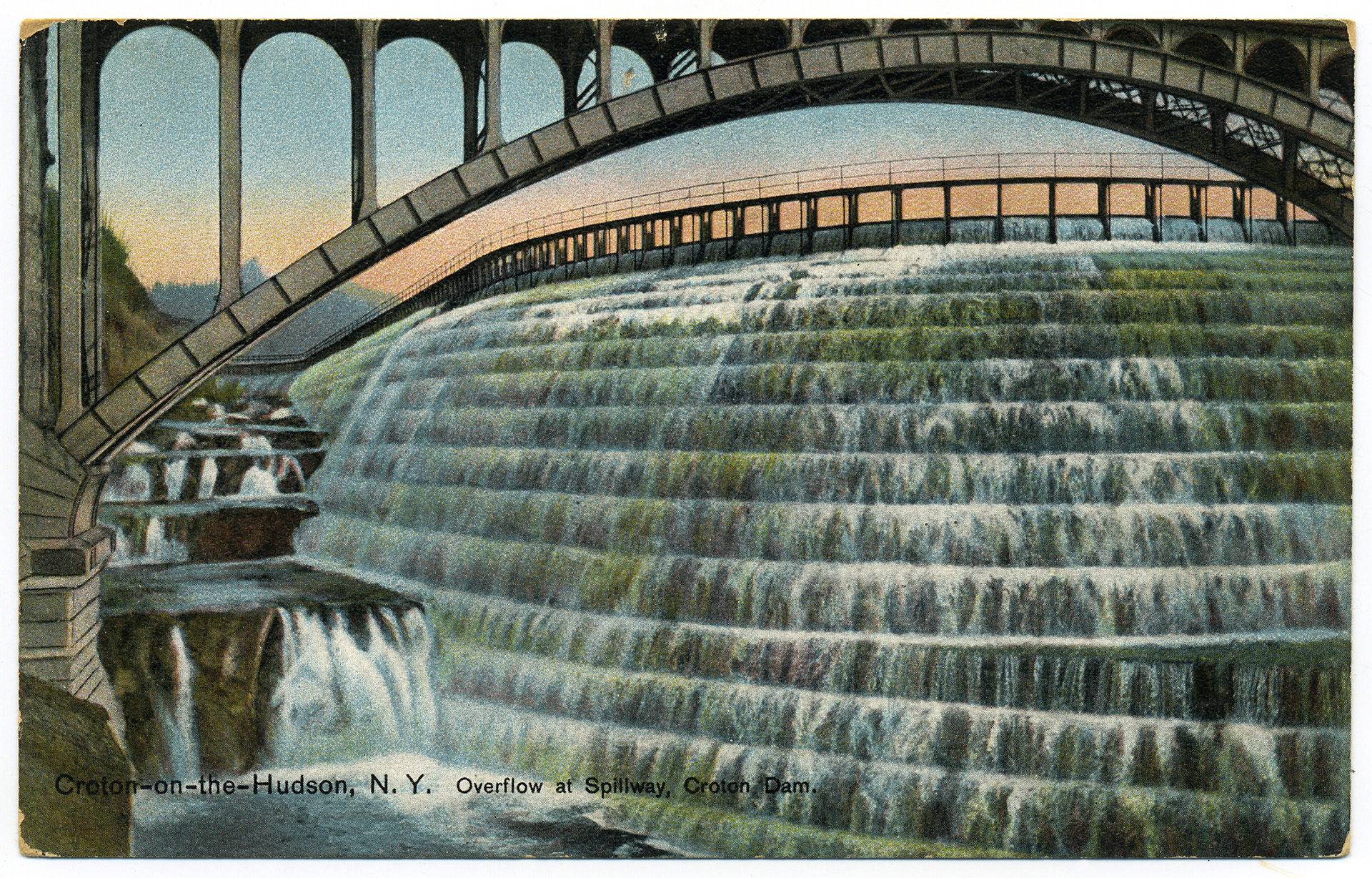New Croton Dam Bridge
Then
Bridges often have been built to carry aqueducts or to cross reservoirs, spillways and other water works features. New York City’s water supply system started with the construction of the Croton Aqueduct in 1887; it was completed in 1842. It was soon apparent that it was not sufficient for the growing city; construction began on a “new” Croton Aqueduct in 1885. The plans included plans for a new reservoir which would replace an older structure that had dammed Croton Lake (the Old Croton Dam is now underwater near the Gate House Bridge).
Several sites were considered, and the one chosen was located near the Old Croton Dam, about 1⅛ miles upstream of the Quaker Bridge; the new dam came to be called the New Croton Dam. It was designed by Alphonse Fteley. Construction began in 1892, and the masonry began to be laid in May of 1896. In 1905, the dam was nearly complete and its gates could be closed and the dam, spillway, and arch bridge were officially finished in 1906.

New Croton Dam Bridge, 2009
Now
The bridge over the dam has undergone two major rehabilitation projects since it opened over a hundred years ago (the span was completely replaced; only the masonry abutments are original). Work was done during the 1970s and again in 2005. The bridge is constantly being sprayed with water from the spillway, so damage to the structure from too much moisture has long been an issue. The 1970s rehabilitation project got rid of the spandrel columns completely (a 1999 photograph of the bridge can be seen in Stanley Greenberg’s Waterworks).
In 2005, the bridge was redone to look as much as possible as it did when it first opened. The bridge received a special three-coat paint system to help protect it from the water spray. The span lacks some of the ornamentation of the original, but is a much closer representation than its predecessor.
The bridge’s roadway has been closed to public vehicles since its most recent reopening; it remains open to pedestrians.
